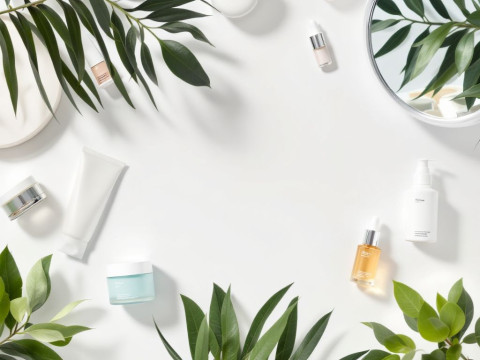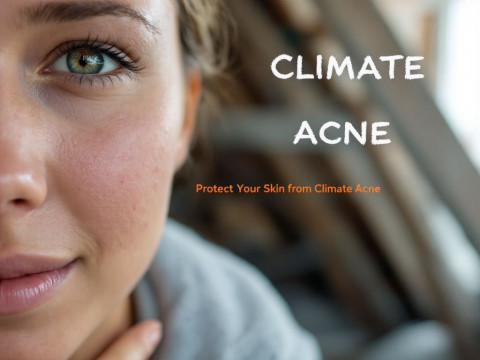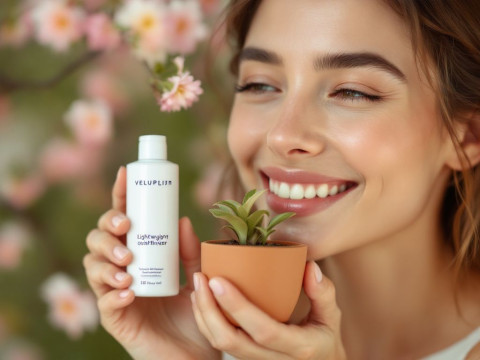So, you’ve just had a baby—congratulations! It’s a beautiful, whirlwind moment filled with countless late-night feedings and more baby photos than your smartphone can handle. But amidst all the precious newborn cuddles, you might glance in the mirror and wonder: “What’s up with my skin?”
Why Your Skin Feels Like a Stranger
Pregnancy does quite a number on your body, and skin is no exception. You’ve just spent nine months riding a hormonal rollercoaster, which can leave your skin in a bit of a tizzy. This wild ride can lead to skin issues like dryness, acne, and hyperpigmentation. This is where the journey to skin recovery kicks in.
Skin issues postpartum can sometimes be unexpected or feel frustrating, but understanding why these changes happened is the first step to feeling like yourself again.
Let’s Talk Hormone Balance
First up on our skin recovery list is hormone balance. During pregnancy, hormone levels are at a super high, but once that little one makes their appearance, everything starts to shift again. Estrogen levels drop, and this can result in drier skin. Additionally, testosterone levels can cause postpartum acne. It’s a lot, but knowing what’s happening can help you address it better.
Trust me; you’re not alone in this. Every new mom goes through some form of hormonal rebalancing act. Imagine it as your body’s way of venturing back to its pre-baby self, or at least finding its new normal.
Skin Changes Worth Noting
You’ll notice a multitude of skin issues that can pop up post-baby. Perhaps those pregnancy glow powers have taken a temporary leave. Among the most common culprits in the face-changing game:
- Dry or Flaky Skin: Those days of having super-hydrated skin could feel like a distant memory. After childbirth, your skin may feel like sandpaper.
- Acne: Remember those high school acne days? Yeah, some traces of them might visit you again, annoyingly so. This is pretty common due to fluctuating hormones.
- Hyperpigmentation: ** Melasma, or the famed “mask of pregnancy,” may linger or darken. It’s the pigmentation that’s influenced by hormones.
- Stretch Marks: Although not on your face, it’s a good reminder of your body’s incredible ability to grow life. They may fade over time.
Learning to manage these symptoms maximizes your skin recovery path, helping you feel fabulous— even during those 3 a.m. feedings.

Step-by-Step Skin Recovery After Pregnancy
Alright, let’s get down to the nitty-gritty of postpartum skin care. You’re busy with a brand-new human, so skin care should be quick, effective, and stress-free.
1. Gentle Cleansing is Key
Don’t overdry your skin with harsh cleansers. Opt for something gentle, like a fragrance-free, hydrating formula. Trust me on this one; less is more post-pregnancy. It’s like giving a tired engine a gentle tune-up instead of a complete overhaul.
2. Moisturize to Rejuvenate
Flaky skin needs moisturizing, pronto—with a side of gentle love. Look for products with hyaluronic acid or glycerin. They pull moisture into your skin, helping with that unwanted dryness. Apply right after you shower to lock moisture in; it’s a game-changer.
3. Exfoliate Wisely (But Not Excessively)
Don’t attack your skin like a mad scientist conducting an experiment. Once or twice a week, treat your skin with an exfoliant. Avoid anything too gritty; you need something soothing, especially if your skin is sensitive after those hormonal storms.
4. Don’t Skip the Sunscreen

Yes, even if you’re mostly indoor chasing the baby, the sun’s sneaky rays can accentuate any dark patches. Go for SPF 30 and above, broad-spectrum of course, to keep your skin protected. It’s like the skin’s invisible umbrella against pigmentation flares.
5. Make Time for a Facial Massage
A little tender love with a well-earned facial massage stimulates circulation and can work wonders in reviving that pregnancy glow. Plus, those few moments can be a mini “me-time” break in a day filled with spills and diaper changes.
6. Watch What You Eat
Healthy skin beneath begins with what you’re munching on. Seek balance in your diet, emphasizing omega-rich foods like salmon and avocados. These nourish your skin from the inside-out. And don’t underestimate the power of good ol’ H2O.
Healing Your Skin Naturally
Let’s pivot to a crucial part of skin recovery: healing your skin naturally. Here’s the deal: sometimes the best solutions are the simplest.
- Natural Oils: Think along the lines of coconut oil or shea butter; they’re exceptional for combating dryness without a fuss of chemicals.
- Aloe Vera: This unassuming plant is excellent for calming irritated skin. The cooling sensation is like a soft whisper of relief.
- Honey and Oat Mask: Sounds like breakfast, doesn’t it? But this mix is a healing wonder for tired skin, rejuvenating it in an unassuming way.
Circling back, never rush the natural recovery process. Patience, combined with a few easy remedies, can ensure gentle healing—a key part of unfolding the postpartum glow you’re after.

Common Mistakes in Postpartum Skin Care
Mistakes? Yeah, we all make them. But when it comes to skin recovery, a few slips can cost precious time and effort. Here’s a handy list to spell them out:
- Ignoring Professional Advice: Even if you’re a DIY queen, consulting a dermatologist or esthetician about hormonal skin changes is invaluable.
- Product Overload: You’re not casting a skincare ad, so replace five-step systems with effective, smart picks.
- Forgetting Rest: Ah, rest. Elusive when a baby’s involved, but sleep facilitates skin repair.
- Stress Overload: Stress can wreak havoc, so incorporate relaxation techniques. Yoga or reading a book can divert unnecessary tension.
Trust me, coupled with these awareness moments woven into your routine, actionable changes become seamless. It gradually transforms a momentous task into a habitual practice.
Enlighten with Balance
Remember hormone balance? Let’s return to this core concept, because finding balance doesn’t happen overnight. Confirmation comes through persistence. You’re guiding your body back to steadiness, allowing yourself grace amidst new mom chaos. Picture it as climbing a hill – steady strides bring you to the peak.
Drifting into a rhythm that harmonizes work and rest is your beautiful goal. Continue nourishing your skin and fueling your soul—a splendid process unfolding at healthiest pace.
Embrace the Journey of Skin Recovery
It’s hard; we know. Each baby giggle or new discovery marks a journey of highs and hiccups, embodying your dual role: caregiver and you-carer. Ensure careful tending to skin and spirit remains woven into your story. Therefore, trusting yourself through genuine efforts spells out the essence of balance and adaptability in recovering skin you’ll rediscover it in.
This isn’t a sprint but rather a steady weave of skin recovery intertwined with understanding and adaptation over time. Being human—new mom—is part of the relish, charm, and marvel amidst blazing those understated yet powerful postpartum roads toward rejuvenated skin recovery. One literal vital layer at a time.
Frequently Asked Questions
What are the main stages of skin recovery after a wound?
The main stages of skin recovery after a wound include: Stage 1 (Hemostasis) – stopping the bleeding; Stage 2 (Clotting) – forming a scab; Stage 3 (Rebuilding) – growth and proliferation where new tissue is formed; and Stage 4 (Maturation) – strengthening the new tissue. Each stage is crucial for proper wound healing[1][3][5>.
How does the body prevent infection during the skin recovery process?
During the skin recovery process, the body prevents infection through the action of white blood cells, such as macrophages. These cells clean the wound by fighting bacteria and other germs, and they also release growth factors that help repair the injured area[1][3][5>.
What role does collagen play in skin recovery?
Collagen plays a crucial role in skin recovery by acting as a scaffold for other cells to build on. During the rebuilding stage, fibroblasts produce collagen, which reinforces the wound and provides structure for new tissue. Collagen also contracts to pull the margins of the wound together[1][3][5>.
How long does it take for a wound to fully heal and regain its original strength?
The time it takes for a wound to fully heal and regain its original strength can vary depending on the size and depth of the wound. Generally, most wounds are repaired after about 3 months, with the new skin and tissue being about 80% as strong as before the injury. Full healing can take up to several years[1][3>.
References










